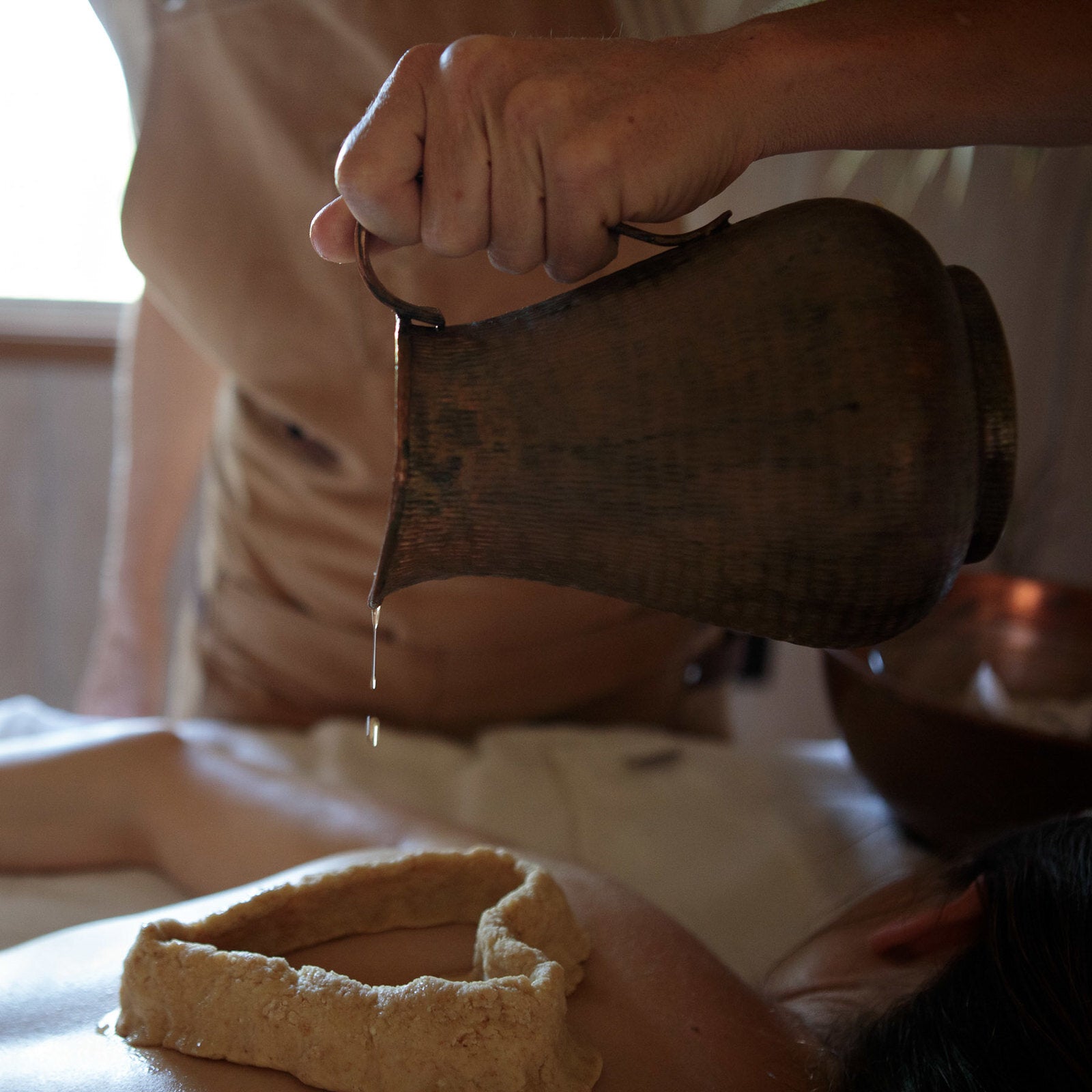
Have you ever wondered why oil is such a significant part of Ayurveda? From the top of your head to the bottoms of your feet, the oil treatments recommended in the Ayurvedic texts provide healing benefits inside and out. Here’s a quick look at why Ayurvedic self-care and treatments recommend oil for health and healing.
Oil and ojas
Ayurveda looks at the whole picture of health. This includes how you feel, as well as how you look. When your skin and hair is soft and supple, it’s a sign that ojas is plentiful. Abundant ojas keeps you healthy, maintains proper reproductive function and supports a state of spiritual unity. Ojas is sustained in part by having the right balance of oil and healthy fats in your body.
Ojas is like a savings account – you need to replenish it whenever you make a withdrawal. You lose ojas through stress, illness, sexual activity, lack of sleep and generally pushing your body beyond its limits. If you avoid using fats and oil in cooking or applying it to your skin, your ojas savings account will drop to a negative balance. This causes you to become brittle and dry in the body and experience doubts or critical thoughts in the mind. The right amount of oils and high-quality fats, used internally and externally, helps you stay healthy and full of vitality (just like everything in Ayurveda, that “right amount” depends entirely on your individual constitution). Using oil in cooking or on your body for therapeutic purposes builds your vitality, calms your mind and helps you live a more balanced life.
The Ayurvedic qualities of oils
Oils are simply extractions from foods and, like foods themselves, have qualities that should be taken into account when choosing which one to use. Though coconut oil has become very popular in recent years, it is important to understand that it is has cooling qualities. It is great for calming pitta and for use in the summer, but should be avoided during cold and windy seasons or when vata or kapha dosha are out of balance.
Sesame oil is heavier and more warming, better for balancing vata and kapha. Ghee is tridoshic, but should be used in moderation when strong kapha is present as it is heavier than other oils.
When you are considering which oil to choose, think about your vikruti, or current state of balance. The oil you select should have the opposite qualities for imbalances you are experiencing – this goes along with the Ayurvedic philosophy that “like increases like, and the opposite brings balance.” This principle applies to oils you use for cooking and topical treatments.
Your skin is your largest organ
If you’ve ever had an Ayurvedic treatment or practiced abhyanga on yourself, you have experienced the immediate relaxation that comes when warm oil is applied to your skin. But the effects go deeper than that. Your skin acts as a two-way filter to bring in and release elements. Applying herbal oil on your skin allows you to soak up the benefits of the oils and herbs and encourages the release of toxins. When you seek out an Ayurvedic treatment, be sure that your technician is trained in understanding which oils and herbs are the most beneficial for your current condition. You’ll know this assessment has been made when you receive a consultation or fill out a wellness questionnaire that assesses your vikruti before you begin a treatment.
It’s not just the oils themselves that have a powerful effect, it is the ways in which we use them that can bring healing and balance. For instance, a local, external basti (where oil and herbs sit in a specific location on the body held in place by a dough dam) on the heart chakra can soften rigidity and allow the recipient to release anger or fear. Or the vata-pacifying treatment of karnapurna (where sesame oil is placed into the ear canal to sit for several minutes) calms the senses and provides relief from an overactive and distracted mind. The effects of oil treatments support other activities that you undertake to find balance in your body and mind.
Your skin is also where you experience the sense of touch. The Ayurvedic texts describe the use of oil in treatments as a way to facilitate the healing power of touch. Whether it is your own hands through abhyanga, or the skills of a trained Ayurvedic treatment technician performing snehan, a gentle, loving touch does wonders for your whole being.
Ways to use oil for health and healing
Oil is a wonderful medicine, and there are ways that you can tap into this every single day, no matter how much time you have. Here are three simple practices we recommend:
-
Place a dab of oil on the top of your head to start your day. This is especially nice during vata season, but at any point in the year it will act as protection for the flow of prana in your body. If you are easily affected by others’ energy, reapply the oil before you enter social situations.
-
Apply warm oil on the bottoms of your feet at night to aid restful sleep. We like Banyan Botanical’s Sleep Easy oil or our Peaceful Nights aromatherapy blend mixed in the base oil of your choice.
-
Place a bit of ghee just inside your nostrils after neti (nasal rinsing). This lubricates your sinuses and protects against pathogens, allergens and toxins.
